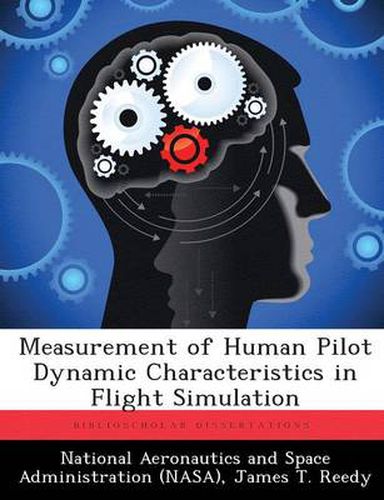Readings Newsletter
Become a Readings Member to make your shopping experience even easier.
Sign in or sign up for free!
You’re not far away from qualifying for FREE standard shipping within Australia
You’ve qualified for FREE standard shipping within Australia
The cart is loading…






This title is printed to order. This book may have been self-published. If so, we cannot guarantee the quality of the content. In the main most books will have gone through the editing process however some may not. We therefore suggest that you be aware of this before ordering this book. If in doubt check either the author or publisher’s details as we are unable to accept any returns unless they are faulty. Please contact us if you have any questions.
Fast Fourier Transform (FFT) and Least Square Error (LSE) estimation techniques were applied to the problem of identifying pilot-vehicle dynamic characteristics in flight simulation. A brief investigation of the effects of noise, input bandwidth and system delay upon the FFT and LSE techniques was undertaken using synthetic data. Data from a piloted simulation conducted at NASA Ames Research Center was then analyzed. The simulation was performed in the NASA Ames Research Center Variable Stability CH-47B helicopter operating in fixed-basis simulator mode. The piloting task consisted of maintaining the simulated vehicle over a moving hover pad whose motion was described by a random-appearing sum of sinusoids. The two test subjects used a head-down, color cathode ray tube (CRT) display for guidance and control information. Test configurations differed in the number of axes being controlled by the pilot (longitudinal only versus longitudinal and lateral), and in the presence or absence of an important display indicator called an ‘acceleration ball’. A number of different pilot-vehicle transfer functions were measured, and where appropriate, qualitatively compared with theoretical pilot- vehicle models. Some indirect evidence suggesting pursuit behavior on the part of the test subjects is discussed.
$9.00 standard shipping within Australia
FREE standard shipping within Australia for orders over $100.00
Express & International shipping calculated at checkout
This title is printed to order. This book may have been self-published. If so, we cannot guarantee the quality of the content. In the main most books will have gone through the editing process however some may not. We therefore suggest that you be aware of this before ordering this book. If in doubt check either the author or publisher’s details as we are unable to accept any returns unless they are faulty. Please contact us if you have any questions.
Fast Fourier Transform (FFT) and Least Square Error (LSE) estimation techniques were applied to the problem of identifying pilot-vehicle dynamic characteristics in flight simulation. A brief investigation of the effects of noise, input bandwidth and system delay upon the FFT and LSE techniques was undertaken using synthetic data. Data from a piloted simulation conducted at NASA Ames Research Center was then analyzed. The simulation was performed in the NASA Ames Research Center Variable Stability CH-47B helicopter operating in fixed-basis simulator mode. The piloting task consisted of maintaining the simulated vehicle over a moving hover pad whose motion was described by a random-appearing sum of sinusoids. The two test subjects used a head-down, color cathode ray tube (CRT) display for guidance and control information. Test configurations differed in the number of axes being controlled by the pilot (longitudinal only versus longitudinal and lateral), and in the presence or absence of an important display indicator called an ‘acceleration ball’. A number of different pilot-vehicle transfer functions were measured, and where appropriate, qualitatively compared with theoretical pilot- vehicle models. Some indirect evidence suggesting pursuit behavior on the part of the test subjects is discussed.